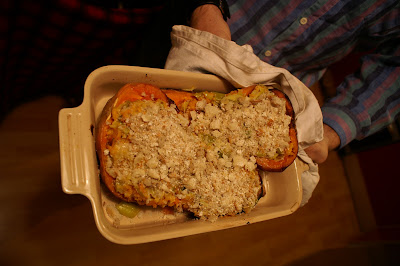The wet weather of winter demands potato and cream, amongst other things. This dish is extremely simple and recalls the Scandinavian dish of baked sliced potato with cream and anchovy whose name now escapes my head if it ever lodged there at all.
Ingredients
- five - seven potato
- saltfish amounting to roughly a quarter the mass of potato
- spinach (the proper stuff not namby-pamby baby nonsense)
- cream, butter and garlic
Boil the saltfish in three changes of water from a cold start to get rid of the salt. Slice the potato thin and put a layer in an oven-proof dish. Scatter over the saltfish (flaked), some bits of butter and plenty of pepper. Go easy with the salt on account of the preserved fish as the seasoning can be corrected easily later. Add a layer of spinach and repeat till everything is used up. Pour an amount of cream you feel comfortable ingesting over the dish and add pepper and a little butter to the top. We had a fish free version also. They will need around forty five minutes - keep an eye on the top spud slices to prevent over crisping. Foil can be used here.
In my one Euro bargain pyrex bowl from Brussels we made a chocolate squidge cake with an impromptu addition of some quince.
Ingredients
- four eggs
- the same weight on dark choc, butter and caster sugar
- eighty five grammes ground almonds
- one tablespoon cornflour
We had it with quince poached with sugar and a little spice and creme fraiche.









































